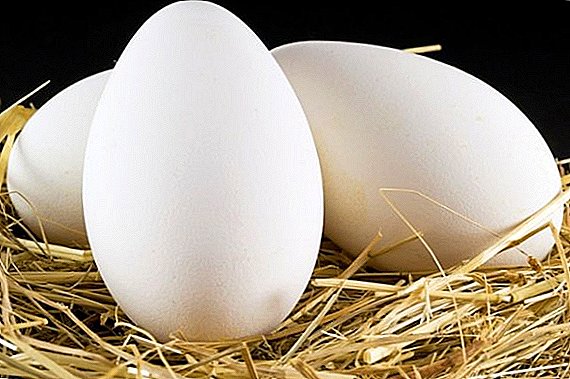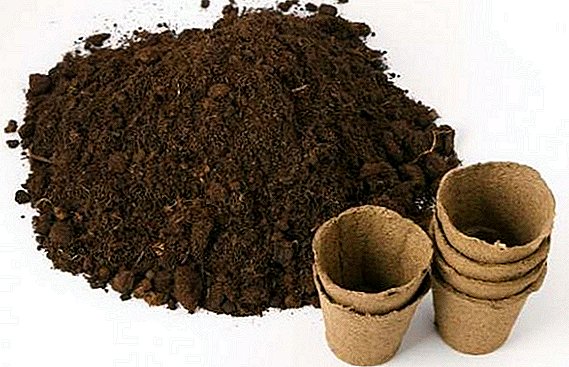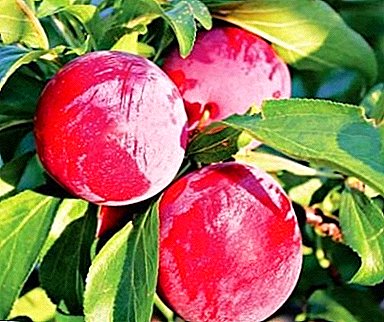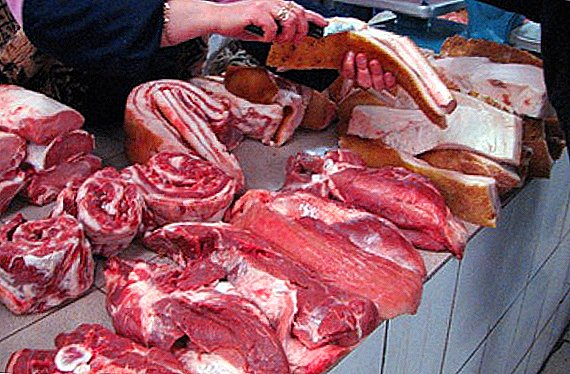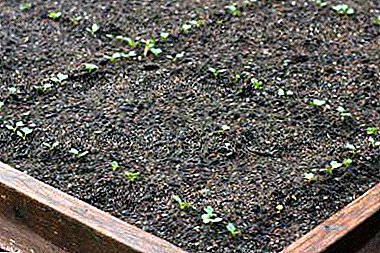
As a vegetable crop, radishes have gained popularity due to the early planting dates and rapid ripening. Along with the greens, this vegetable manages to diversify the menu already at the end of April - at the beginning of May when disembarking in open ground.
The advantages of radish include ease of preparation of the beds, no need to grow seedlings, as well as minimum requirements for loosening and weeding. What is really worth paying attention to is maintaining a certain temperature. About this and tell you next.
Why is temperature important for radishes?
With all its unpretentiousness, radish is a specific culture, rather cold-resistant, but not tolerant of heat. Maintaining the optimum temperature at different stages of radish growth will allow you to control the development of foliage and the formation of root crops.
With a lack of heat, the growing season increases, with an excess - the chances of booting increase.
Differences in outdoor cultivation and in a greenhouse or greenhouse
Cultivation of radish in greenhouses and greenhouses allows you to adjust the microclimate, to get a harvest in early spring, while planting in open ground is less troublesome. There will be no significant difference in temperature conditions, with the only difference that planting in open ground is subject to large differences in heat and cold, depending on cloudy or sunny weather.
A good harvest can be achieved at home, if it is possible to place the planting outside the living quarters - for example, on the glazed balcony or loggia. For home garden should choose early maturing, resistant to low light, drought and tsvetushnosti - such as:
- "Dawn".
- "Early red".
- "18 days".
- "Quart".
Maximum and minimum allowable values of the thermometer reading
 Since radishes are a precocious crop, crops are not buried in the soil, the seeds are laid to a depth of 2 to 2.5 centimeters. At what minimum temperature do the seeds germinate? Due to the frost resistance of cultivated radishes, this value for seeds will be -4 ° C on the soil, and adult plants can tolerate short-term frosts down to -6 ° C.
Since radishes are a precocious crop, crops are not buried in the soil, the seeds are laid to a depth of 2 to 2.5 centimeters. At what minimum temperature do the seeds germinate? Due to the frost resistance of cultivated radishes, this value for seeds will be -4 ° C on the soil, and adult plants can tolerate short-term frosts down to -6 ° C.
But the extremely high temperature is + 24 ° C air. Increasing the temperature will stop the growth of the root, make it flabby, dry and bitter.
When can sow in open ground?
- The soil in the garden should be loose, and when sown early - April 12-20, the grooves are additionally shed with hot water. For the germination of radish, + 1 ... +2 ° С is enough, but in such conditions the development of plants will occur slowly.
- Before the emergence of shoots (usually 4-5 days), the most favorable temperature will be +20 ° С, which can be achieved by covering the beds with an agro-weave or foil.
Important! When shoots appear, the daytime covering of the film should be stopped and, prior to the formation of the first sheet, focus on the temperature from +6 to +14 ° С.
This is required to ensure that the development of the tops is not overly active to the detriment of the formation of root crops. In April-May, daily temperature drops are most noticeable, therefore, early-spring planting can be continued to cover the film at night.
The advantage of agropolotna is that gentle shoots of young shoots do not suffer under it from overheating on sunny days. And besides creating the greenhouse effect, the canvas still has a protective function against the appearance of earth fleas, therefore its use is also recommended for late sowing of radish.
- For already grown-up landings and during growth, the temperature can reach +24 ° C, provided that it is watered daily. With a relative humidity of 70% of the air and the soil and proper care, the radish harvest can be obtained 20 days after the seeds are introduced into the soil.
Optimum temperature conditions of the soil and air
Before the radish is fruited on sunny days, it is appropriate to fluctuate the air temperature from +20 to +22 ° С, while the ground should be heated to + 15 ... +16 ° С. In cloudy weather, favorable air temperatures range from +7 to +9 ° С. At night, cold temperatures up to + 5 ... +6 ° С are acceptable.
During the formation of radish root crops in sunny weather, the temperature should not exceed +18 ° С, on cloudy days - do not fall below +14 ° С. At night, the optimum air temperature is +8 ... +10 ° C, on the ground it is also + 15 ... +16 ° C.
 So from day 6 to day 20 after sowing, It is important to maintain a moderate temperature without artificially shading the beds.so as not to provoke bolting.
So from day 6 to day 20 after sowing, It is important to maintain a moderate temperature without artificially shading the beds.so as not to provoke bolting.
To obtain several radish harvests per season, when planted in July or August, in order to prevent an excess of heat, on hot days you can resort to irrigation with cold water.
It is not recommended to sow radishes during the period from the end of May to the third decade of June due to the length of daylight, as even at moderate temperatures, the formation of arrows cannot be avoided.
What should be for rapid growth?
From the varieties of radish and the quality of the seed depends on the timing of the harvest. However, the time from sowing to harvesting can be controlled by controlling the temperature of the soil and air. Consider the most comfortable temperature conditions for radish and its seeds growing in open ground:
- for seed germination, the air and soil temperature is + 5 ... +8 ° С;
- for the growth of radishes, the air temperature should be +14 ° С, soil + 10 ... +12 ° С;
- grows rapidly at air temperature of +20 ° С, soil + 16 ... +18 ° С.
Is it afraid or not vegetable frost, which endures?
Often, radishes are sown immediately, as soon as the snow melted, and the earth thawed at least four centimeters deep. Short frosts from -4 to -6 ° C can stop the growth, but will not affect the quality of the future crop. Small frosts are even useful for adult plants - the radish will grow juicy and tasty.
But prolonged cooling significantly slow down the development of plants, reduce the beneficial properties of root crops, which grow hollow and tasteless. A significant decrease in temperature is guaranteed to destroy crops.
Is radish sensitive?
It may seem that the plant, declared as unpretentious, is too sensitive to the violation of the temperature regime, and growing it is too difficult a task. But in practice, properly selected varieties are half the success. A little attention, the use of agropolotnaya or covering the film, watering with cold water on hot days - and all spring, summer and even the beginning of autumn will be provided with a harvest of juicy and beautiful radish.




